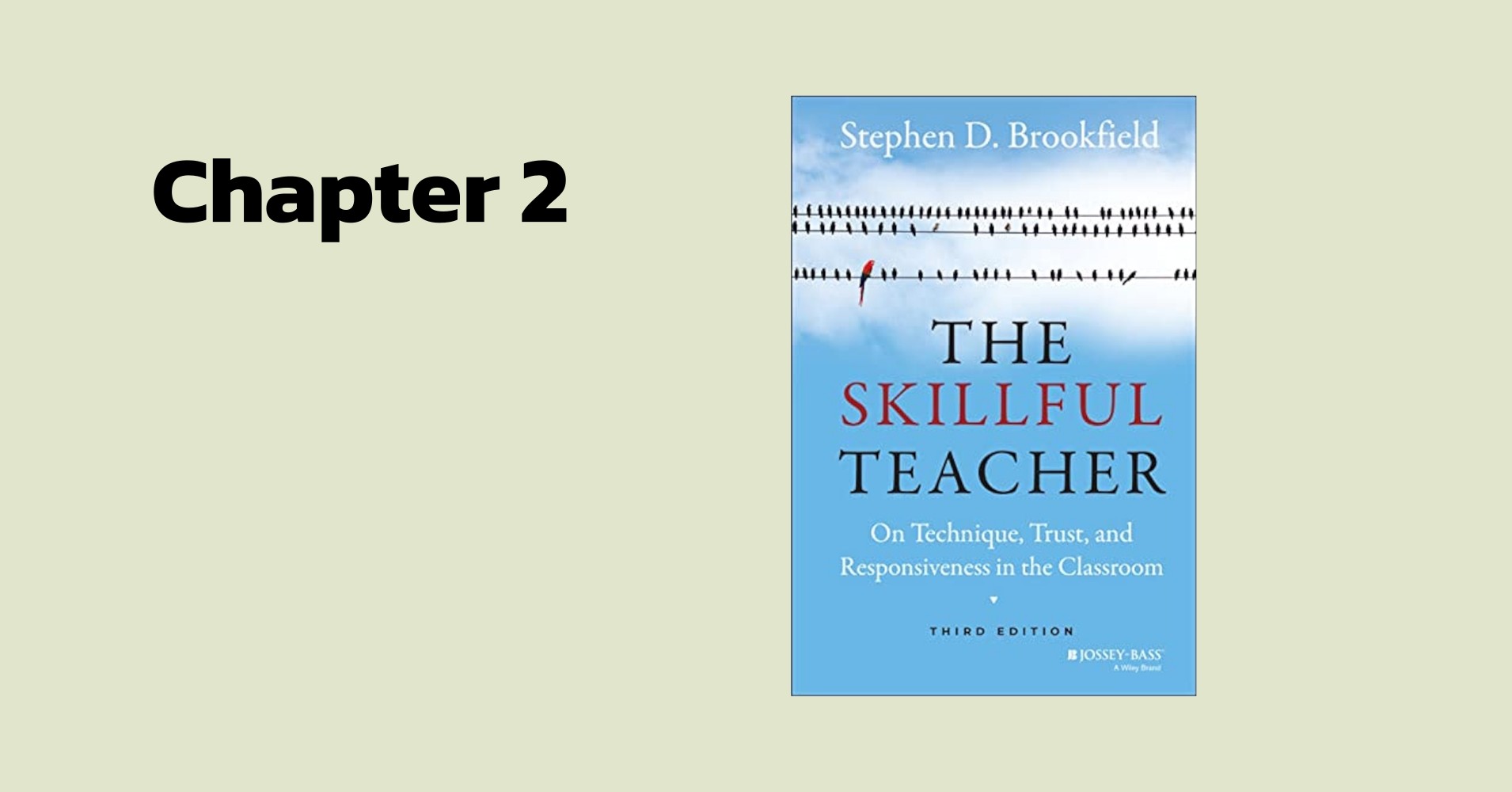Brookfield Chapter 2: The Core Assumptions of Skillful Teaching

Brookfield chapter 2: The Core Assumptions of Skillful Teaching contains in my view some bits of wisdom that can be applied to many aspects of life.
But first here are the opening points:
- Skillful teaching is whatever helps students learn
- Skillful teachers adopt a critically reflective stance toward their practice
- The most important knowledge that skillful teachers need to do good work is a constant awareness of how students are experiencing their learning and perceiving teacher’s actions
- College students of any age should be treated as adults.
These may sound boring, but Stephen goes on to describe one technique he uses to achieve the first one, which is to walk out of the classroom and leave the students with a panel former students.
He says, “One of the most difficult things for me is to face as a teacher a group of students that is at best apathetic, at worst angry, hostile, and contemptuous […] In such situations telling students that the course will benefit them, that what they learn will be crucial for their further progress through school or for their career choice, is often a waste of breath.”
The approach to engaging such students Stephen outlines is a sales strategy, like posting referrals on a website. Leveraging alumni panels by providing discussion prompts and then deliberately exiting the room to encourage candid feedback probably works very well. Though he admits leaving a room unsupervised is risky, he sees it as a necessary step to reduce perceived authority pressures and build genuine student faith.
I found his approach interesting because I view education as an opportunity, and can be sometimes baffled by students that don’t appreciate it, or bring, as he says ‘apathetic’, ‘angry’, or ‘hostile’ attitudes into the ‘dojo’, as it were. But in the real world, people in groups have a myriad of incentives to behave in ways that can seem counter productive.
Social objectives aimed at answering the question of ‘who is who’ can get in the way of teaching and learning KSAs (knowledge, skills, attitudes).
In highlighting his issues, Stephen insightfully highlights the challenge of mandatory education: how to deal with students who, like many high-school students, are often uninterested or even rebellious. In high-school settings, teachers often deploy disciplinary measures, like detention, or other classroom management—tools that seem disconnected from learning.
He suggests ‘winning’ students over to the cause of learning (their cause, not yours) with various strategies, like bringing in converts (alumni), and encouraging and collecting anonymous feedback, then publicly discussing it, should be prioritized first.
In doing so, he’s suggesting that the painstaking process of building teacher-student trust is critical in effectively teaching learning objectives.
Personally, my view is that building trust between professionals and their charges should be paramount practice in all professions, including law, healthcare, governance, and others. When those in authority exploit their roles for personal gain or social validation rather than service, trust erodes, which can lead to malignance in society.
My belief is that societal progress can be greatly improved today by improving on our social subconscious ideas about ‘successful’ professionalism actually looks like.
By all means, let trust be the foundation.
